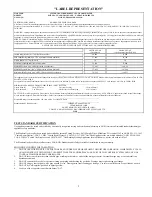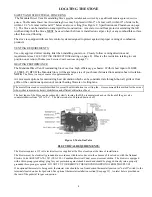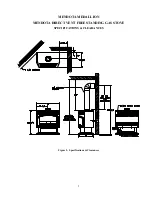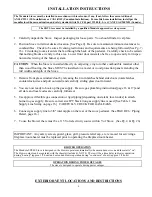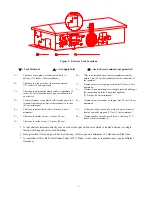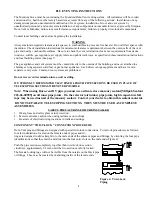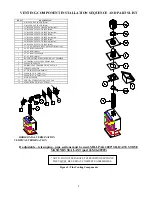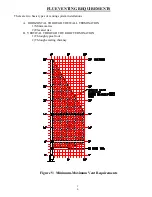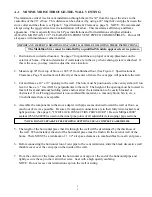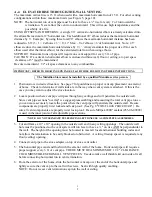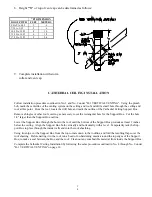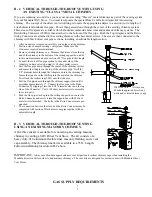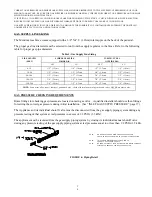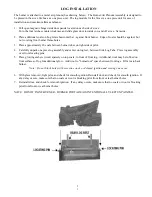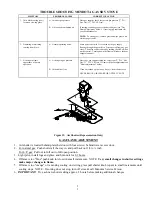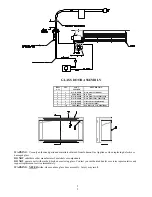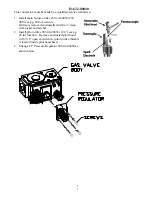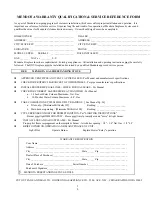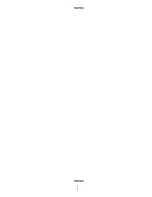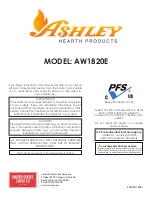
GAS PRESSURE REQUIREMENTS
A MAJOR CAUSE OF OPERATING PROBLEMS WITH GAS APPLIANCES CAN BE IMPROPER GAS PRESSURE!
Such problems as changes in flame color or configuration, gas pilot or burner outages, intermittent operation,
changes in heat output, excessive burner noise, etc. are nearly always the result of changes in gas pressure or
improper gas pressure at the time of the installation. The most important item to check during the installation and the
first thing to check when problems occur is gas pressure!
Gas supplies normally enter a residence at 1/2 PSI (13" - 15" W.C.) (3. KPA). A regulator is then placed inside the
residence, which drops this pressure to 7" W.C. (1.8 KPA) (Nat. Gas). This "inches to inches" regulator is of
adequate capacity to service the gas appliances (such as dryer, furnace, etc.). If this regulator's capacity is not
sufficient to add the Gas Stove, an additional "inches to inches" regulator must be installed for the Stove.
EXCEPTION: Some codes allow 2 PSI (1.4KPA) supplies to enter the residence, in which case "pounds to inches"
regulators are used.
The following table provides information on correct gas pressure requirements. Be sure your gas supplier or
plumber carefully follows this table.
INLET GAS SUPPLY PRESSURE
DESIRED
PRESSURE
MINIMUM
PRESSURE
MAXIMUM
PRESSURE
MANIFOLD
PRESSURE *
AIR SHUTTER
POSITION
NATURAL GAS
7.0" W.C.
5" W.C.
11" W.C.
3.5" W.C.
1/8
" OPEN
L.P. GAS
11.0" W.C.
11" W.C.
13.0" W.C.
10.0" W.C.
1/2
" OPEN
* TURN GAS VALVE KNOB TO "HIGH" POSITION. GAS PRESSURES MAY VARY PLUS OR MINUS 5%
* Manifold pressure must be taken at the outlet "manifold" tap and inlet pressure at "inlet" tap with the burner
operating by a qualified installer (see Figure 7: Pressure Test Port).
NOTE: for high altitude (above 5,000 feet) some variations in air shutter settings may be required. (See Pg. 24)
Figure 7: Pressure Test Ports
1
7
Summary of Contents for MEDALLION
Page 21: ...Log Fire View Figure 9 Log Module 2 0...
Page 33: ...NOTES NOTES 3 2...

